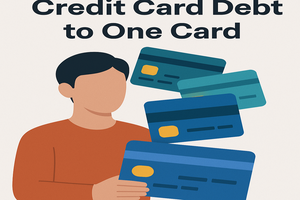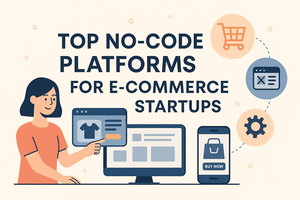How to Monetize a Tech Blog with Affiliate Marketing: The Ultimate Guide for 2025
If you’re running a tech blog and looking for ways to make passive income, affiliate marketing is hands down one of the most effective strategies available today. Whether you're reviewing the latest gadgets, explaining AI tools, or writing about cybersecurity trends, affiliate marketing can turn your passion into profit — without overwhelming your audience with ads.
In this comprehensive guide, we’ll break down everything you need to know about monetizing a tech blog with affiliate marketing — from choosing the right products to writing high-converting content and scaling your earnings.
What is Affiliate Marketing?
Affiliate marketing is a performance-based marketing strategy where you earn a commission by promoting other people’s (or companies’) products. When a visitor clicks on your affiliate link and makes a purchase, you get paid a percentage of the sale.
In simple terms:
-
You → Recommend a tech product
-
Reader → Clicks your affiliate link
-
They buy → You earn commission
Why Affiliate Marketing is Perfect for Tech Blogs
Tech audiences are naturally research-driven and purchase-ready. Whether it’s someone looking for the best laptop, coding course, VPN, or AI writing tool, they often rely on blogs for honest recommendations. This gives tech bloggers a unique opportunity to:
-
Recommend real products they use or trust
-
Create helpful, evergreen content
-
Generate passive income long after a post is published
In fact, many top tech bloggers earn five to six figures per month solely through affiliate links.
Step-by-Step: How to Monetize Your Tech Blog with Affiliate Marketing
1. Define Your Niche and Audience
Before adding affiliate links everywhere, start by clearly defining:
-
Your niche: Are you focused on AI, programming tools, cybersecurity, gadgets, SaaS, etc.?
-
Your audience: Are they developers, business owners, students, or everyday tech enthusiasts?
The more specific your niche, the easier it becomes to target the right products and build trust.
Example niches:
-
Cloud-based tools for remote teams
-
AI tools for content creators
-
Programming gadgets for coders
2. Choose the Right Affiliate Programs
Don’t just join Amazon Associates and call it a day. Look for high-paying, niche-specific affiliate programs with recurring commissions or high-ticket products.
Here are some great tech affiliate programs to consider:
-
Amazon Associates (general electronics)
-
Impact.com (SaaS, software)
-
ShareASale (tools like Grammarly, WP Engine)
-
CJ Affiliate (web hosting, security)
-
PartnerStack (SaaS tools like Notion, FreshBooks)
-
Awin (gadget sites, VPNs)
-
Private Programs (like Elementor, Bluehost, NordVPN)
Tips:
-
Check the cookie duration (longer = better)
-
Look for recurring vs. one-time commissions
-
Avoid spammy or low-quality products
3. Create High-Quality, Intent-Focused Content
Content is king, but intent is the throne.
Instead of randomly inserting affiliate links into blog posts, create content that solves problems and naturally recommends products. This makes your recommendations more trustworthy and leads to better conversion rates.
Effective content types for affiliate marketing:
-
Product Reviews (e.g., “Grammarly Review 2025 – Is It Worth It?”)
-
Comparisons (e.g., “Notion vs Trello – Which is Better for Project Management?”)
-
“Best of” Lists (e.g., “Best VPNs for Remote Work in 2025”)
-
Tutorials (e.g., “How to Set Up Bluehost for Your WordPress Blog”)
-
Tech Stack Guides (e.g., “Best Tools to Run a SaaS Business”)
Pro Tip: Use buyer-intent keywords like “best”, “review”, “vs”, “top”, and “how to use” — they convert better.
4. Optimize Your Affiliate Links
Don’t just paste ugly links into your content. Use tools to make your links clean, trackable, and clickable.
Tools to manage links:
-
Pretty Links (WordPress) – Cloaks and shortens links
-
ThirstyAffiliates – Great for managing campaigns
-
Bitly or TinyURL – Simple shortening tools
-
UTM parameters – Track traffic from social/email/SEO
Make sure your CTAs (calls to action) are natural, not pushy. Example:
“Want to make writing easier? Try Grammarly for free – it’s what I use daily.”
5. Build Trust with Transparency
Your readers are smart — and skeptical. Be honest and disclose your affiliate relationships upfront.
Add an affiliate disclaimer like:
“This post contains affiliate links. I may earn a commission if you purchase through these links at no extra cost to you.”
This builds trust and keeps you compliant with FTC guidelines.
6. Drive Consistent Traffic
You can’t make money from affiliate marketing without traffic. Here are the best ways to grow your traffic sustainably:
A. SEO (Search Engine Optimization)
-
Focus on long-tail keywords
-
Use tools like Ubersuggest, Ahrefs, Surfer SEO
-
Optimize meta titles, descriptions, images, and internal linking
B. Social Media
-
Promote new blog posts on Twitter, LinkedIn, Facebook Groups
-
Create tech-focused Pinterest pins for evergreen content
-
Use Reddit and Quora for answering and linking
C. Email Marketing
-
Collect emails with lead magnets (e.g., “Free List of 10 Must-Have Coding Tools”)
-
Send weekly newsletters with your new reviews and comparisons
D. YouTube (Optional but Powerful)
7. Track Performance and Optimize
Affiliate marketing is not “set it and forget it”. Use tools to monitor what’s working and tweak regularly.
Track:
-
Which blog posts generate the most clicks/sales
-
Which links have the highest CTR
-
Conversion rate for each product
Use dashboards like:
-
Google Analytics
-
Affiliate program dashboards (Amazon, ShareASale, etc.)
-
Link managers (like Pretty Links)
8. Scale Up Strategically
Once you start making consistent income, it’s time to scale.
You can:
-
Outsource content creation to freelancers
-
Build topic clusters around high-performing categories
-
Create your own product (ebook, course, app)
-
Partner with brands directly (sponsorships)
Affiliate marketing is just the beginning — your blog can become a full-fledged tech media brand.
Common Mistakes to Avoid
-
Too Many Products, Not Enough Depth – Focus on quality over quantity.
-
Writing for Algorithms, Not Humans – Keep your content reader-friendly.
-
No Target Audience – Niche down, always.
-
Neglecting Updates – Refresh old content to stay relevant.
-
Forgetting Legal Disclosures – Always disclose.
Final Thoughts
Affiliate marketing is a long-term game, but with the right strategy, it’s one of the most scalable and passive ways to earn money from your tech blog. Focus on trust, valuable content, and audience-first writing, and your blog can become a powerful income-generating asset.
Whether you're just getting started or already seeing traffic, now is the perfect time to double down on affiliate marketing.













